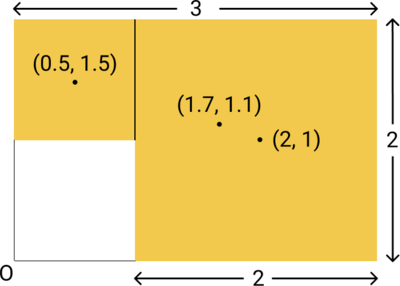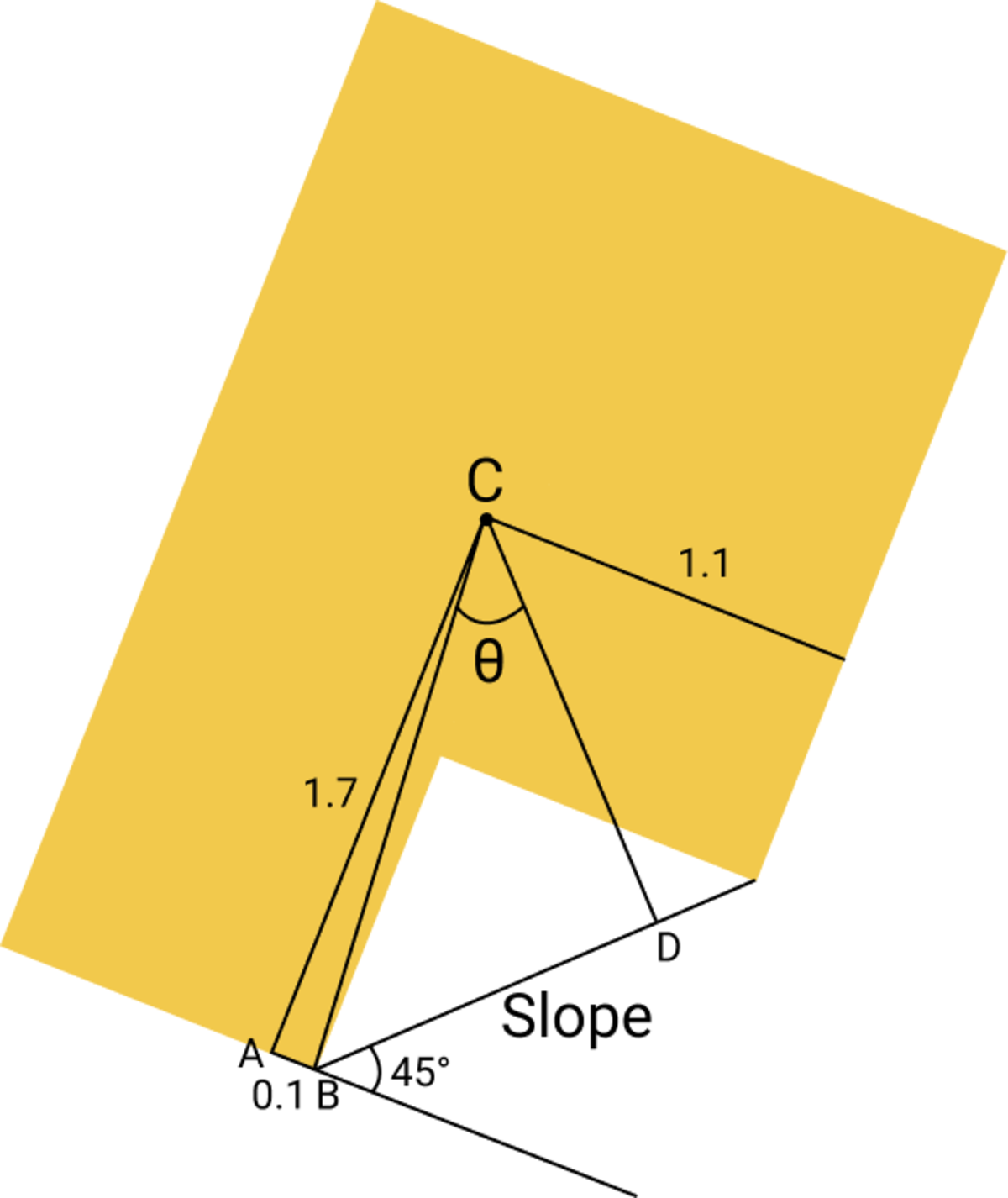Tipping Point
Consider a uniform lamina resting on a rough incline of angle to the horizontal. All the adjacent sides are perpendicular to each other, and the side lengths are marked in the diagram.
If the friction is sufficient that the lamina does not slip, what is the maximum value of , in degrees, before the lamina topples?
Submit your answer to 1 decimal digit.
The answer is 41.6.
This section requires Javascript.
You are seeing this because something didn't load right. We suggest you, (a) try
refreshing the page, (b) enabling javascript if it is disabled on your browser and,
finally, (c)
loading the
non-javascript version of this page
. We're sorry about the hassle.
Identifying the centre of mass of the lamina is the first step: x
=
1
+
4
(
0
.
5
×
1
)
+
(
2
×
4
)
=
1
.
7
and
y
=
1
+
4
(
1
.
5
×
1
)
+
(
1
×
4
)
=
1
.
1
x
=
1
+
4
(
0
.
5
×
1
)
+
(
2
×
4
)
=
1
.
7
and
y
=
1
+
4
(
1
.
5
×
1
)
+
(
1
×
4
)
=
1
.
1
At the point of toppling, the centre of mass of the lamina lies vertically above the leftmost pivot point.
The angle marked 4 5 ∘ is equal to ∠ A C D .
Having found the centre of mass, we can determine ∠ A C B = tan − 1 ( 1 . 7 0 . 1 ) ≈ 3 . 3 7 ∘ .
∠ B C D = θ = ∠ A C D − ∠ A C B = 4 5 ∘ − 3 . 3 7 ∘ = 4 1 . 6 ∘ .